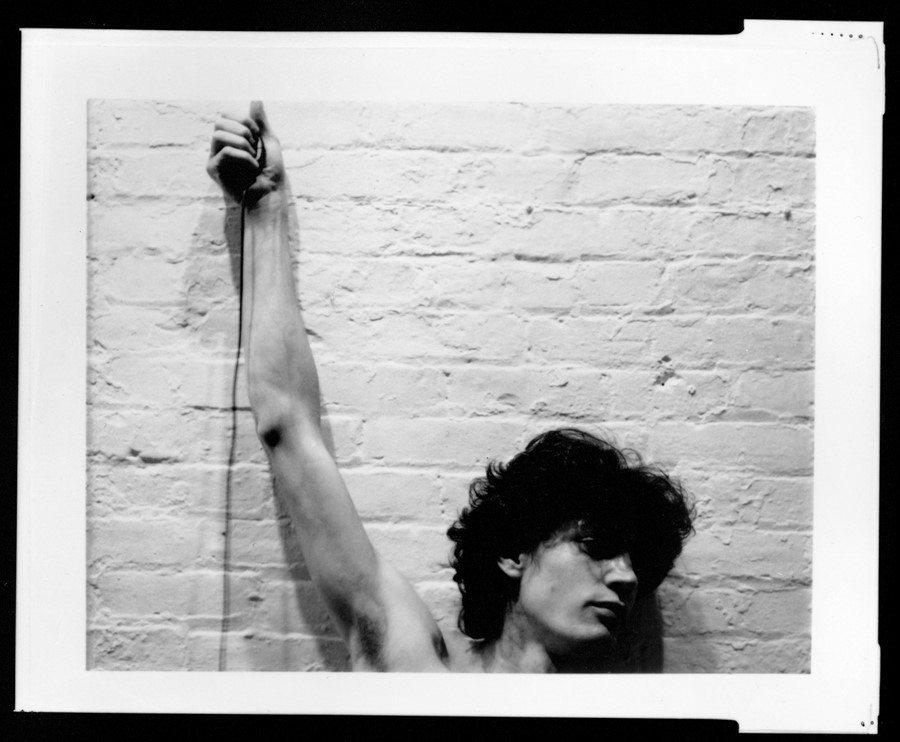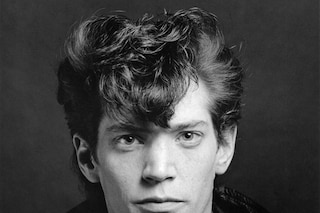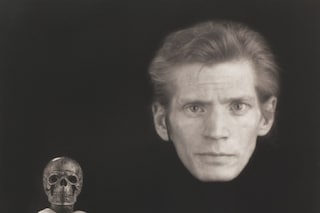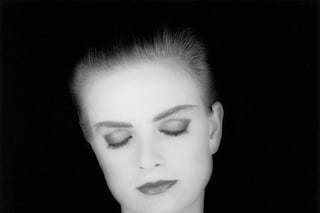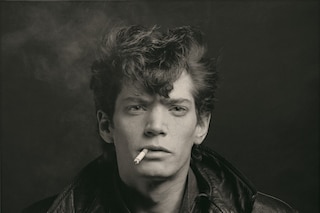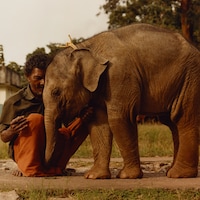The directors of a new doc on the similarities between Mapplethorpe and Madonna, and why the NY photographer’s work still has the power to shock
“Look at the pictures,” yelled Senator Jesse Helms, denouncing the controversial art of American artist Robert Mapplethorpe, whose photographs pushed boundaries with frank depictions of nudity, sexuality and fetishism. Mapplethorpe’s final show, The Perfect Moment, self-planned as he was dying of Aids, proved to be a time-bomb, igniting a culture war that still reverberates today.
With unprecedented, unlimited access to his archives and work, Mapplethorpe: Look at the Pictures does just that , taking an unflinching, unprecedented look at his most provocative work. The only thing more provocative than Mapplethorpe’s photographs was his life. He was obsessed with magic and, in particular, what he saw as the magic of photography and sex. He pursued both with insatiable dedication.
We speak to directors Randy Barbato and Fenton Bailey about the divisive artist and their motives for making the movie, with an exclusive clip available to watch below.
What motivated you to make a documentary about Mapplethorpe’s art and life at this moment in time?
Randy Barbato: We initially had some conversations with HBO, who are the co-producers of the film, and his name came up. Fenton and I used to live in NY in the 80s and were very familiar with Mapplethorpe, but we realised that we kind of knew the name but didn’t really know the art or the man. He is well-known for the scandal that happened in the 90s but we know so little about him beyond that. He’s sort of overexposed and underrevealed. So we started doing some research and became more and more obsessed with the art and the man.
The interviews with him are brilliant, he seems so open and so candid. And he says some very striking things – his definition of relationships, for instance. Who did those interviews?
Fenton Bailey: Those come from a dozen different sources. He chose people very cleverly, he befriended a lot of writers and he wanted writers to write about him. He was always giving interviews! And we managed to track down some of them. Most of the time the texts are really old, some of them are decayed, but we found a few good ones from different sources and put them together.
And that’s when we realised: this is how we make the film. It’s Look at the Pictures, his work, and listen to his words. And there you are! It’s extraordinary that so much has been said about Mapplethorpe and so many people told his story and I thought, what about Mapplethorpe himself telling his story? He’s perfectly, incredibly articulate. And just tells it the way it is. And if people are going to judge him for it, he doesn’t care, it’s all hashtag truth.
This is a very endearing aspect of his personality.
Randy Barbato: Yes, it is an endearing aspect and unfortunately a lot of people might not think that way. There are people who think, OMG, how horrible, he seems so selfish, so manipulative, so ambitious.
Like most artists, actually!
Randy Barbato: Yeah, exactly!
Fenton Bailey: Exactly, but most artists don’t admit it because they think it will harm their chances. Or that people will judge them negatively. But Mapplethorpe admitted it. So the film is about him but it’s also a how to guide because Mapplethorpe was very open, he was very competitive, but he wasn’t guarding his secrets. He was very, ‘This is how you do it.’ There’s a great archive we found where he takes a young Dutch artist, Peter Klasvost, who is filming him. So he takes his picture, he shows him his work. You can see, Mapplethorpe wanted others to succeed.
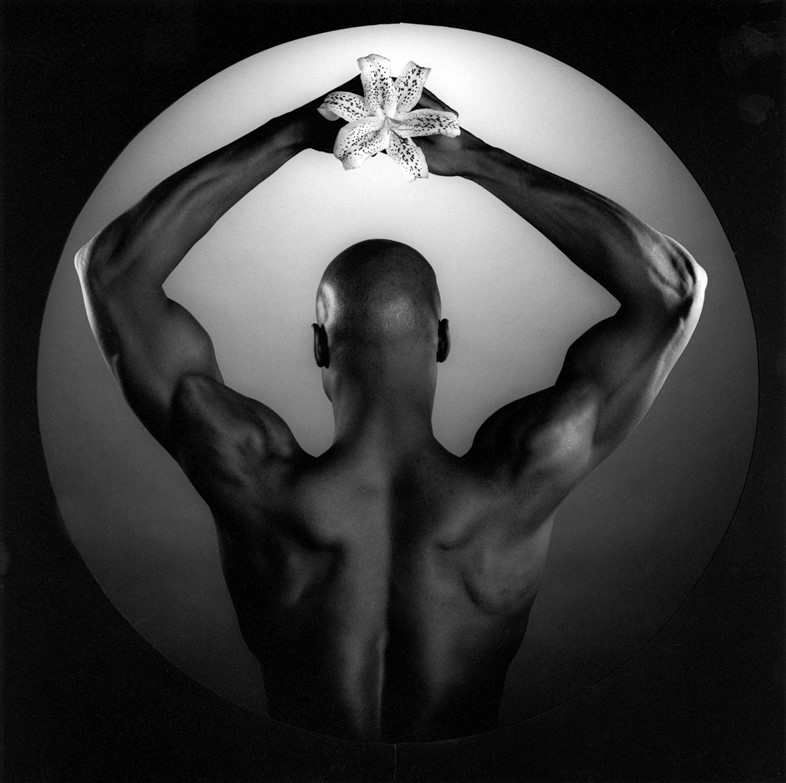
His life plays very much like a fairytale – he was looking for a protector and he found one in Sam Wagstaff, the famous art collector, who was crucial to his career. Would Mapplethorpe be so well-known today without Sam?
Randy Barbato: Yes, because either there would have been another Sam, or there would have been another way.
Is that why you didn’t focus too much on their relationship?
Fenton Bailey: We didn’t focus on any relationship in particular.
Randy Barbato: Because there were so many of them! There wasn’t a singular person or collaboration that was responsible for Mapplethorpe’s success or career. He was responsible for his success and career. And the multitude of relationships and collaborations just added up to who he was.
So whether it was Wagstaff or Patti Smith, David Croland, Edward Mapplethorpe, Robert Sherman, Marcus Leatherdale, Lisa Lyons, Jack Fritscher, or Jack Walls, it was the sum of all of those that added up, not to who he was, because he always was who he was. You hear him talk about knowing at a very young age that he knew he was an artist: ‘I am an artist, whatever that means.’
“Madonna especially. I think they are very similar: the Catholic factor, from middle class, their dedication to work ethic, the Blonde Ambition, using your looks to get what you want, being proactive at collaborating with other people to get what you want, not being ashamed about your ambition. I think they are very very similar” – Fenton Bailey
His self-confidence was amazing, he seems to have had a sense of his destiny from very early on.
Fenton Bailey: Yeah, and he knew he was going to get there no matter what it took. Although I don’t say that in a negative way at all. To me it was almost admirable.
There’s obviously a scandalous element to his story and to his art. Did you have to negotiate any meanings, any interpretations, did you have to hold anything back in making this documentary?
Randy Barbato: No. We were given free rein by the Mapplethorpe Foundation who, you would think, would have every concern about protecting his reputation. I think they recognised that, above all, Mapplethorpe was honest and open, so as the people entrusted to continue his legacy, that’s what they wanted to see in a film – something that was open and honest, no matter what the consequence of that was. And HBO in American media, they show everything. We were actually a bit apprehensive that some of it would be difficult for them, but they saw the film and they loved it!
Fenton Bailey: And it would make no sense to make a Mapplethorpe film without including everything – why bother? But it’s true, when you step back and think – wow, LACMA, Getty, HBO, these are big entities and none of them had any kind of editorial input or control... and it’s not an easy film, it’s a challenging film.
“For someone who was so savvy at climbing the social or artistic ladder, who was such a careerist, and so smart about marketing his name and his work, I just didn’t expect to see such sensitive work so early, and such a commitment to actual art” – Randy Barbato
You preface the film very well with the opening sequence, the Conservative politician’s rant on the Senate floor. ‘Look at the pictures, look at the pictures’… Which you chose as the title…
Fenton Bailey: Exactly, he was asking people to look at the pictures hoping they would be outraged and we’re asking people to look at the pictures to see the art. So thank you, Jesse Helms!
Was there something completely surprising that you discovered about Mapplethorpe while making this documentary?
Randy Barbato: Hmm, good question! For me the big surprise was a lot of his early artwork, I liked it very much. For someone who was so savvy at climbing the social or artistic ladder, who was such a careerist, and so smart about marketing his name and his work, I just didn’t expect to see such sensitive work so early, and such a commitment to actual art. Tracking his artistic trajectory was really interesting and rewarding to me. And unexpected – I really enjoyed looking at his early work.
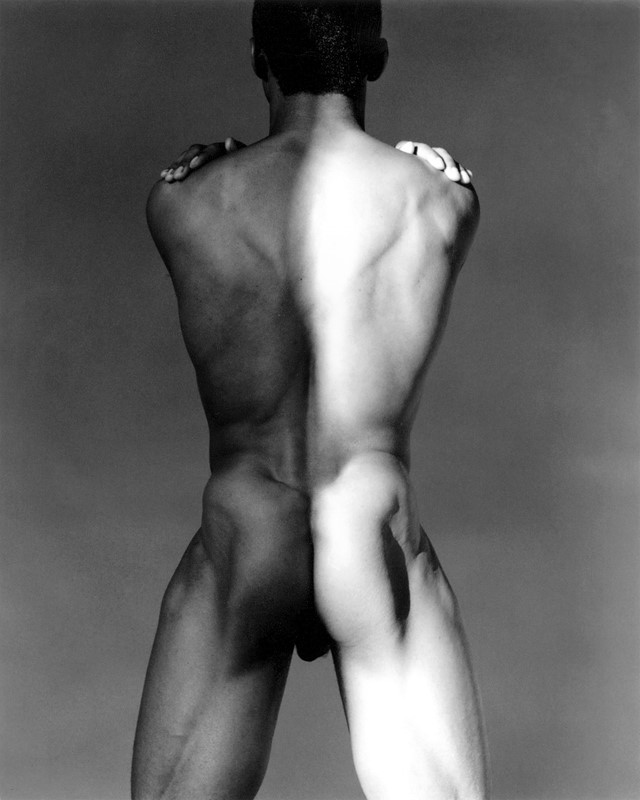
What other artists would you connect him to? In terms of sensibility and ideas?
Fenton Bailey: Well, I think in many ways Warhol. Not so much in the work itself, but more in the approach to the work. The focus on business and the focus on establishing the work. And the fact that you don’t have to handmake everything for it to be authentic work by you.
In this respect, Jeff Koons comes to mind...
Randy Barbato: Madonna comes to mind… She also had those real sex obsessions, she did the Sex book.
Fenton Bailey: Madonna especially. I think they are very similar: the Catholic factor, (the fact they were) middle class, their work ethic, the Blonde Ambition, using your looks to get what you want, being proactive at collaborating with other people to get what you want, not being ashamed about your ambition. I think they are very very similar.
Warhol and Madonna are iconic, quintessential American artists. Considering the similarity you see among the three, could we also call Mapplethorpe a quintessential American artist?
Randy Barbato: That’s funny, I think a lot of Americans would be offended by that. But I think it might be true!
Why would they be offended?
Randy Barbato: Because a lot of Americans find his work challenging and even consider it obscene.
Even today?
Randy Barbato: I think so, potentially. We are about to find out! And although the American art establishment embraced him, the American art establishment is not representative of your everyday American.
What place did New York occupy in his life and work?
Randy Barbato: New York was the launching platform, but he was more global in his ambitions. That’s why the Foundation gave all this material to Los Angeles Museums, LACMA and Getty, and people were outraged. ‘But he’s a New York artist, how could they?’ But Mapplethorpe thought he owed nothing to New York. He wouldn’t be sentimental about New York. But he didn’t go live somewhere else, he went to New Orleans once for a shoot and very early in his career he went to Europe but he didn’t really travel, he spent most of his life in New York until he died at 42.
Mapplethorpe: Look at the Pictures is out in UK cinemas on April 22
